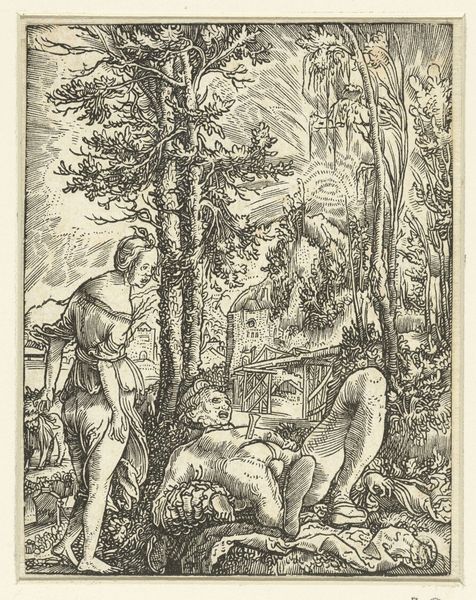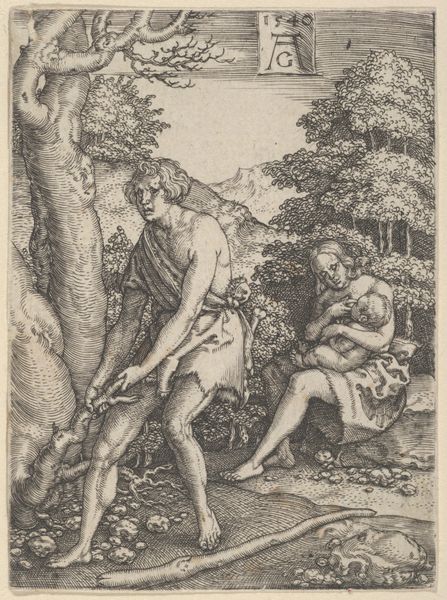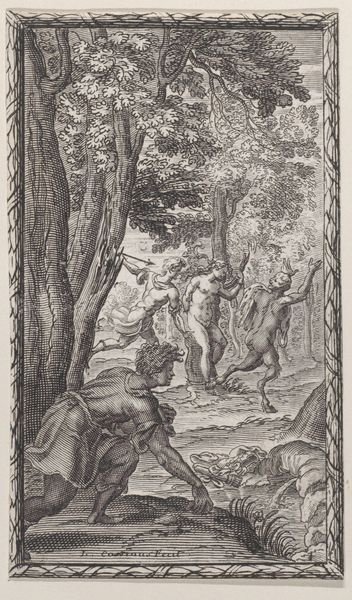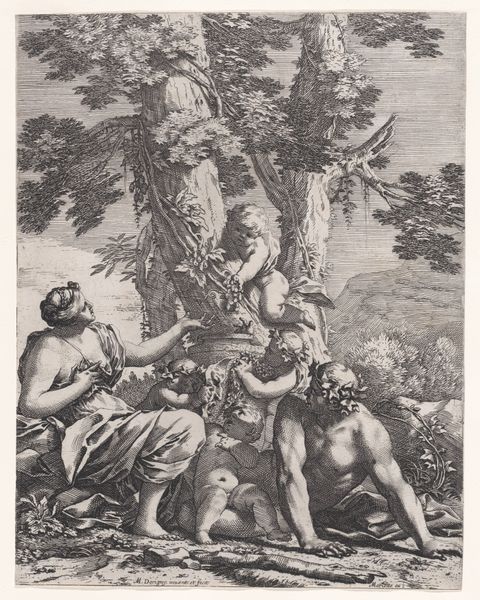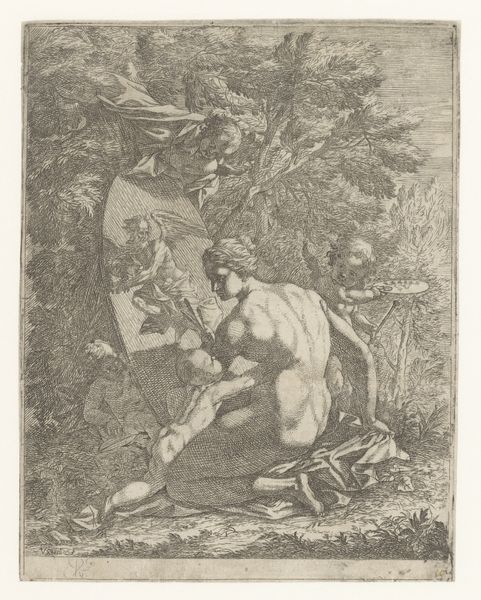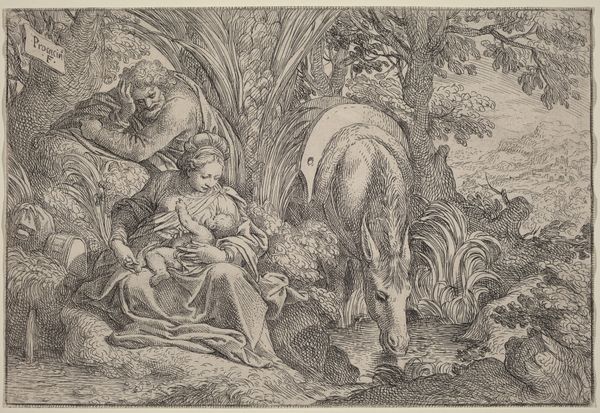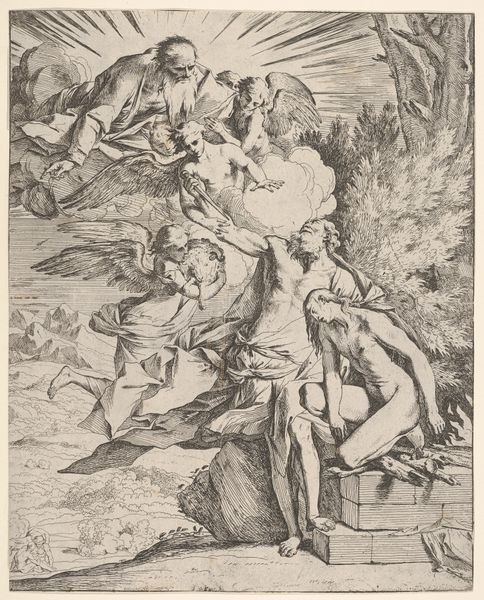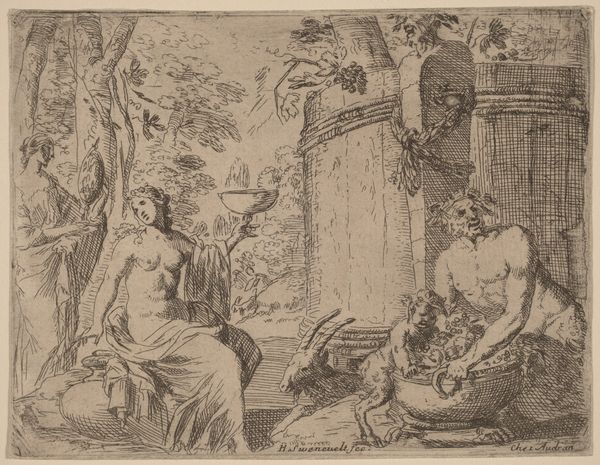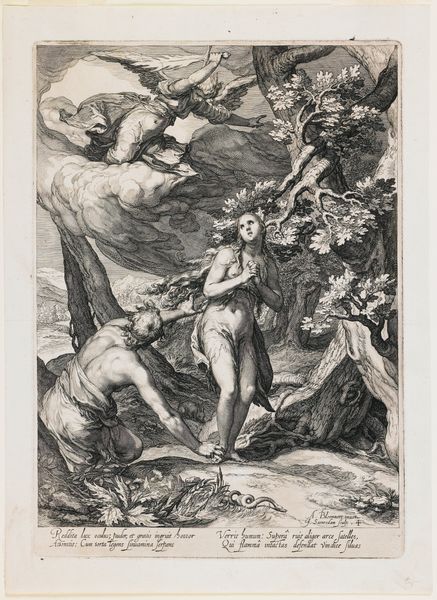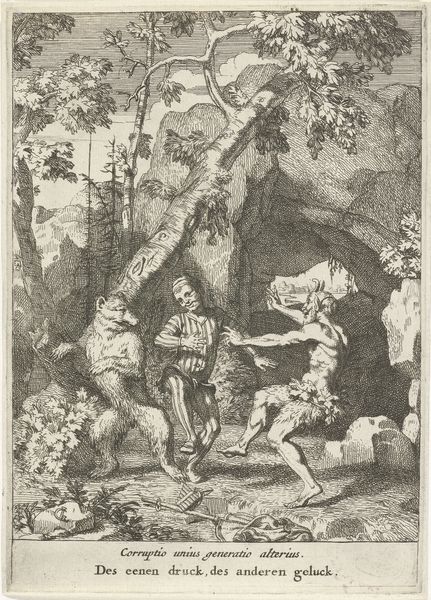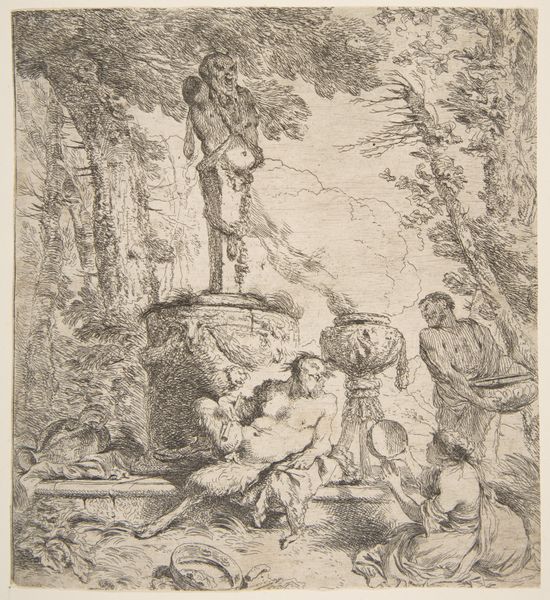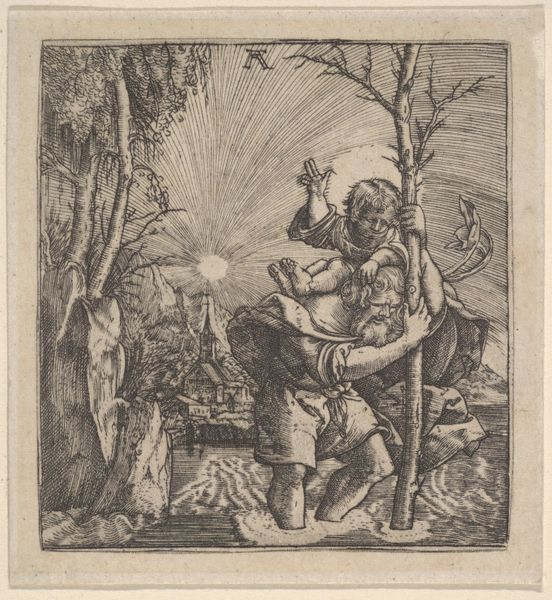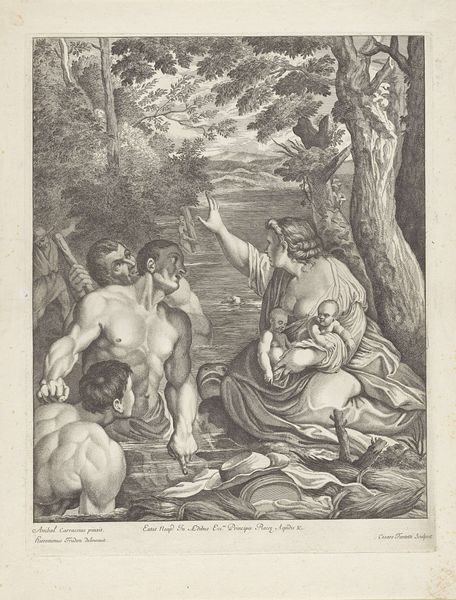
drawing, print, ink, engraving
#
drawing
#
pen drawing
# print
#
landscape
#
classical-realism
#
figuration
#
ink
#
genre-painting
#
history-painting
#
engraving
Dimensions: height 115 mm, width 108 mm
Copyright: Rijks Museum: Open Domain
Curator: The work before us, "Mercurius, Argus en Io" by Jacques Kuyper, dating from 1771 to 1808, presents a scene steeped in classical mythology. What strikes you first about this print? Editor: The density! It's like a forest of lines, all cross-hatching, creating a real sense of enclosure and shadow. Almost claustrophobic despite the ostensible outdoor setting. Curator: Indeed, Kuyper’s meticulous engraving technique shapes the narrative. Mercury, recognizable by his hat, lulls Argus, the many-eyed giant, to sleep with music so he can free Io, who has been transformed into a heifer by Jupiter. This resonates with historical power dynamics, doesn't it? Jupiter's abuse of power, Io's forced transformation, and Mercury’s cunning—a powerful commentary on the vulnerabilities of those in marginalized positions. Editor: Absolutely, but technically, note the contrast between the smooth curves of the bodies and the almost frantic energy of the foliage. He uses light and dark to build form with incredible precision. The way Argus leans, heavy and unsuspecting, is really well done. And that heifer looks almost spectral in the background. Curator: The depiction of Io as a heifer, perpetually watched and surveilled, echoes the historical objectification of women and the control of their bodies. Kuyper utilizes this classical story to highlight themes of freedom, captivity, and deception. We see Jupiter, in the original myths, using Io, she who represents the historical reality of many women rendered powerless in society. Editor: Do you think he pushes it too far, though? It feels a bit didactic. I'm not sure the composition really supports the weight of that reading. Maybe it’s a formal problem? The elements seem a bit too separate, competing for attention. Curator: Perhaps, but this is the period of enlightenment. Many artists use the artwork to give the viewer a new social understanding, and here we see clear references to class issues that were part of the discussion at the time. Editor: Still, regardless of whether the reading holds completely true or not, the command of light and shadow to create the scene, and convey the feeling in this space, can not be understated. Curator: Very true. The enduring power of the story, combined with Kuyper's technical skill, gives us ample ground for thoughtful discussion about history and the present day. Editor: A fitting end, don't you think, to this tour of Kuyper's rich, albeit shaded, world?
Comments
No comments
Be the first to comment and join the conversation on the ultimate creative platform.

